Nature meets culture at Shakespeare in Delaware Park
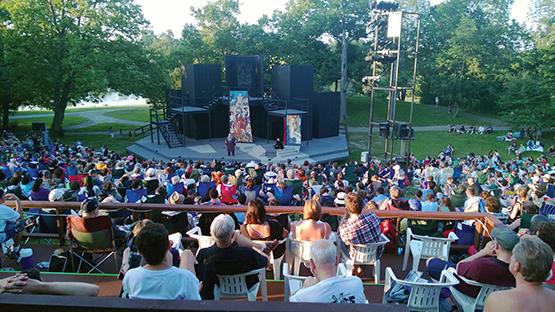
Crowds gather at Shakespeare Hill every summer to enjoy the second most attended free outdoor Shakespeare event in America. “Hamlet,” from 2013
There is a hill nestled in the northwest corner of Delaware Park, near Hoyt Lake, that attracts a crowd on nearly any given summer evening from June to August. This mass of people isn’t loud; it hasn’t gathered to protest or to show its pride – at least, not here. Instead, it has flocked to one central location – a wooden stage.
On what is dubbed Shakespeare Hill, people bring lawn chairs, blankets and picnic baskets full of food and wine. They each stake their claim on a patch of grass for the evening as the sun lowers in the sky. Once the main event begins, dusk will creep upon them, and as the sun sets, the lights of the outdoor theater will take over, almost imperceptible in the midst of the spell William Shakespeare’s words create.
At this meeting place, nature and culture become one, along with what Steve Vaughan calls “the ambiance of a Buffalo summer” – kids, dogs, helicopters overhead and ambulances screaming down Elmwood Avenue or the Scajaquada Expressway. As the suspense, comedy and climax weave an intricate web in the mind of the audience, though, the rest of the noises fade into the background, leaving room for the unique experience of Shakespeare in Delaware Park (SDP).
“It’s a beautiful thing, watching the sun go down and seeing the stage lights take over,” said Vaughan, an actor, fight director and director of “The Comedy of Errors” for this year. “I love working there … it’s part of the fabric of Buffalo tradition.”
•••
Although the productions only last through the summer, the organization works year-round. At this point, according to managing director Lisa Ludwig, it has gotten production teams in place, held auditions, and cast the shows. The Fall Fundraiser, a staged reading to raise money for the organization, has come and gone, and everyone is gearing up for the 20th annual Fabulous Feast April 5, which is an auction and five-course Elizabethan meal complete with costumes, mead and grog, as well as entertainment.
The money raised from these and other events, as well as “passing the hat” (collecting donations during intermissions), goes toward the organization’s production costs.
“Every year, we budget what we hope to make while passing the hat, based on previous years, the economic situation at the time, government funding, et cetera,” Ludwig said. “We do a speech at intermission every night to explain the passing of the hat. If we’re having a tough season due to weather… we adjust the speech to reflect that.”
There are also memberships Shakespeare lovers can purchase, which start at $50 and include perks that increase with each price tier. These are an important part of the equation, according to Ludwig.
“It’s not that they have dropped off – we are just always looking for more people to be a part of the SDP family, and membership is the perfect way to be part of such an important cultural jewel in Western New York,” she said.
Due to the arbitrary nature of fundraising, SDP has to operate on a somewhat tight budget. It has had a partnership with Shea’s Performing Arts Center for the past four years to use rehearsal space with them until the week before opening, which is when rehearsals move outdoors. Scenery and properties designer Ronald Schwartz, also SUNY Buffalo State’s technical designer for the theater department, said he considers recycling and reusing stock elements as well.
“The budget is a huge factor, and that really affects the decision-making I have to do during the design phase,” he said, adding that he also has contacts and local resources to help him flesh out the rest of his designs before they get approved by the director and fellow designers.
The fact that the organization has done this for 39 years speaks volumes about the effort everyone has put in, not to mention the loyalty it has built up.
“We just do our job by putting up professional-quality productions and let our audience know that we are able to do this because of their support when we pass the hat,” Ludwig said.
•••
This coming summer, in fact, is the one that marks SDP’s 39th anniversary. Anthony Chase, the assistant dean of arts and humanities at Buffalo State and founding theater editor of Artvoice, has written about the organization for 24 years. As a result, he has watched it grow from a component of the University at Buffalo’s dance and theater programs into one of the largest and most attended free outdoor Shakespeare events in the nation.
“It’s a rather remarkable opportunity,” Chase said. “By the time someone is out of high school, they could have seen 12 Shakespeare plays. It’s very unusual, and a tremendous cultural asset which brings people together.”
That is, if one takes advantage of the festival while they can – and there is plenty of incentive to do so. Shakespeare Hill lies within a five-minute walk from Rockwell Hall – practically in Buffalo State’s front yard – which means students attending during summer can find entertainment easily. It is basically free – actors pass the hat, collecting donations from willing audience members, but there is no minimum donation amount.
“You can put in one dollar and feel totally comfortable with doing that,” Chase said.
There is also a sort of dramatic utilitarianism to Shakespeare – it is highbrow entertainment (Queen Elizabeth herself watched his plays), and at the same time can amuse the masses, as the playwright needed to entertain the full spectrum of society.
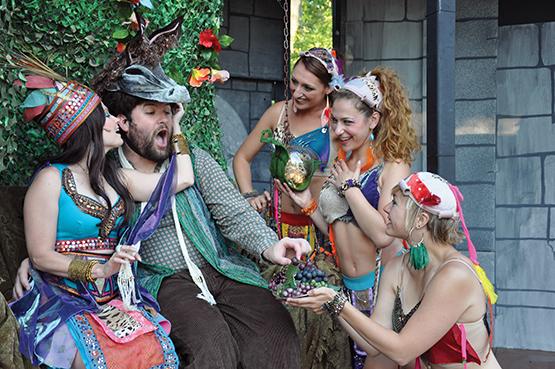
Last, as Chase explained, Shakespeare and his contemporaries transformed the English language into poetry.
“(They) took a language that was not elegant — there was no great poetry written in English because it is a clumsy language,” he said. “Shakespeare, Marlowe, Jonson – they took a clumsy language with most of its words borrowed from other languages and made something spectacular.
Shakespeare is always clever. The (imagery), the clever puns, the dirty jokes – he is always clever, always entertaining.”
•••
SDP is preparing “Henry V” and “The Comedy of Errors” for the stage this coming season, as picked by founder and artistic director Saul Elkin. Usually one production follows traditional interpretation (in this case, “Henry V”); the other, often a comedy, goes in another direction entirely.
Ann Emo, an associate theater professor at Buffalo State and costume designer for SDP, won an Artie Award from Artvoice for her work on the costumes for “The Tempest” in 2009-2010.
“(It) was set on a ‘tropical island’ of sorts off of Brazil,” she said. “We made the place up – it is not real… I did a lot of painting and natural objects in the costumes. That was fun and fantastical.”
For his part, Chase remembers an interpretation of “A Midsummer Night’s Dream” with a Hollywood fantasy theme.
“There were Busby Berkeley chorus girls,” he recalled. “There was also a Fred and Ginger-type of exchange between Oberon and Titania. It was very inventive.”
Vaughan’s take on “The Comedy of Errors” will involve the popular scifi elements of steampunk and dieselpunk, the former of which is neo-Victorian, while the latter involves aesthetics from the era between the first two World Wars. The music will all be live, with musicians playing from the stage as actors, which he admitted might be a limitation depending on skill set – but he added that he and composer Randy Andropolis will work with whatever they have.
“The concept theme we’re thinking of is around the Industrial Revolution,” he said. “We’re probably making up our own style here.”
Vaughan, who is also a theater lecturer at Buffalo State, chose not to do the play in a traditional manner because “the tights and ruffles didn’t add anything.
“This play is about people – about how, when people become emotional, they stop thinking,” he said.
•••
Whether in ruffs and tights or barefoot, the actors and crew have given the audience thrills for close to four decades, with “one of the most beautiful parks in America,” in Chase’s words, as their backdrop.
“It’s very social,” he said. “It’s in a beautiful park setting… everyone gets to commune with each other and with nature.
“There’s an element to all theater experiences in that they bring people together. They laugh together, become frightened together, feel suspense together. It’s a communal, life-affirming experience.”
Email: [email protected]
Twitter: @A_Rodriguez39


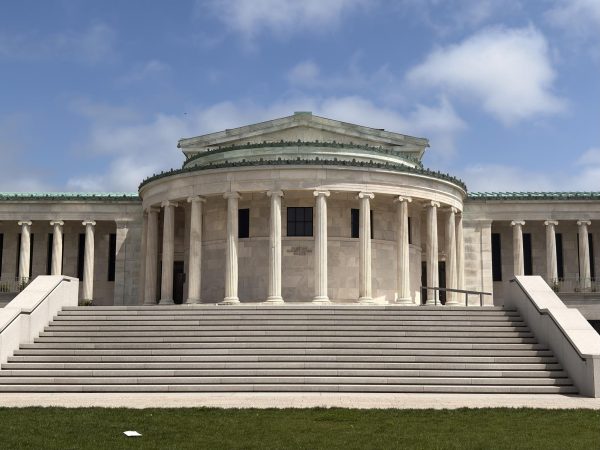
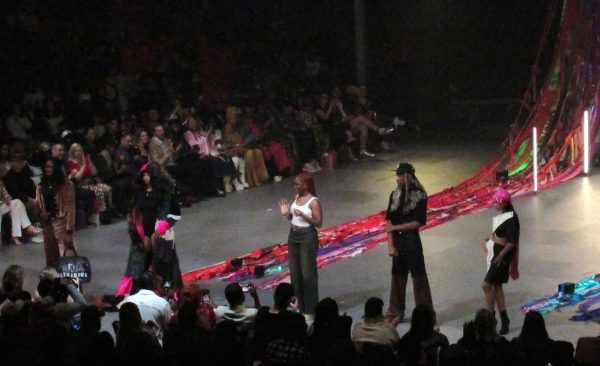
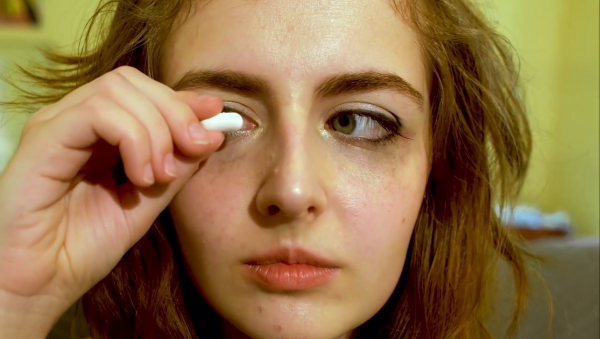
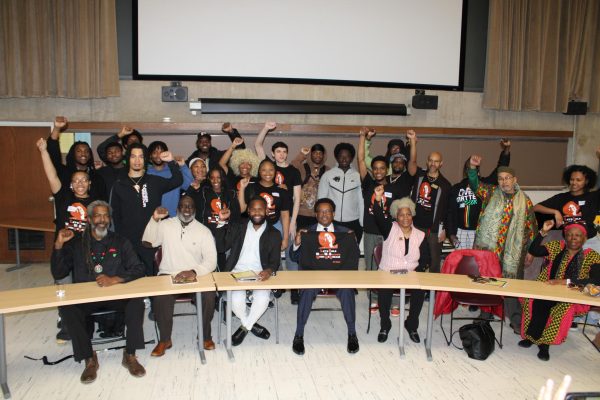

Jogos de mundo • Jul 2, 2015 at 5:00 am
Hello Dear, are you genuinely visiting this site on a
regular basis, if so then you will without doubt take pleasant experience.